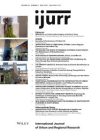On 1 December 2006, the Governor of St. Petersburg, Russia, announced the winning entry in a design competition to design a skyscraper headquarters for the Gazprom‐Neft corporation. The chosen site lies directly across the Neva River from a popular historical tourist site, Smolny Cathedral, and the building’s high modernist style in steel and glass promises a departure from St. Petersburg’s historical style. However, the building’s proposed height of 396 meters poses the greatest threat to local notions of architectural and planning tradition, which favors a low horizontal skyline. Widespread loyalty to that tradition focused attention on the project’s contradiction of the existing Height Regulation, which galvanized the protest activity of several disparate groups throughout 2007 and 2008. Evidence gathered in examination of media coverage, participant observation and interviews among protest groups, as well as city planners and architects, suggests that protest against the project connects directly to the struggle to codify the Height Regulation. Drawing on the moral authority of the historical built environment, protest groups develop a thorough knowledge of drafted legislation and attempt to shame officials who disregard existing codes. Residents thereby enact their ‘right to the city’, as well as new possibilities for Russian polity and identity.
Details
Written by:
MEGAN DIXON
Digital Object Identifier (DOI)
10.1111/j.1468-2427.2009.00871.x
About DOI
Read full article as PDF
Read full article as HTML
See the references for this article
